Exploring the realm of forex trading through the lens of Elliott Wave Theory unveils a structured approach that promises insightful market analysis and potentially lucrative opportunities.
By mastering the seven game-changing tips outlined, traders can elevate their trading strategies to new heights of precision and profitability.
From understanding the fundamental principles to integrating advanced tools like Fibonacci retracement, this method offers a sophisticated framework for navigating the complexities of the forex market.
Stay tuned to discover how these tips can revolutionize your trading game and pave the way for enhanced success in the dynamic world of forex trading.
Understanding Elliott Wave Basics
Dividing market movements into impulsive and corrective waves, Elliott Wave Theory offers a comprehensive framework for comprehending price fluctuations in financial markets. This theory asserts that prices trend in patterns of five waves in the direction of the prevailing trend, followed by three corrective waves against it.
Understanding these wave patterns is essential for making informed trading decisions. By utilizing Fibonacci tools and recognizing specific wave signals, traders can pinpoint optimal entry and exit points with greater precision. Mastery of the basics of Elliott Wave Theory is a foundational step towards implementing advanced trading strategies effectively.
Traders who grasp these concepts have a significant advantage in predicting market movements and adjusting their positions accordingly. By honing their understanding of wave patterns and mastering the principles of Elliott Wave Theory, traders can enhance their analytical skills and elevate their trading strategies to a more sophisticated level.
Identifying Impulse Waves
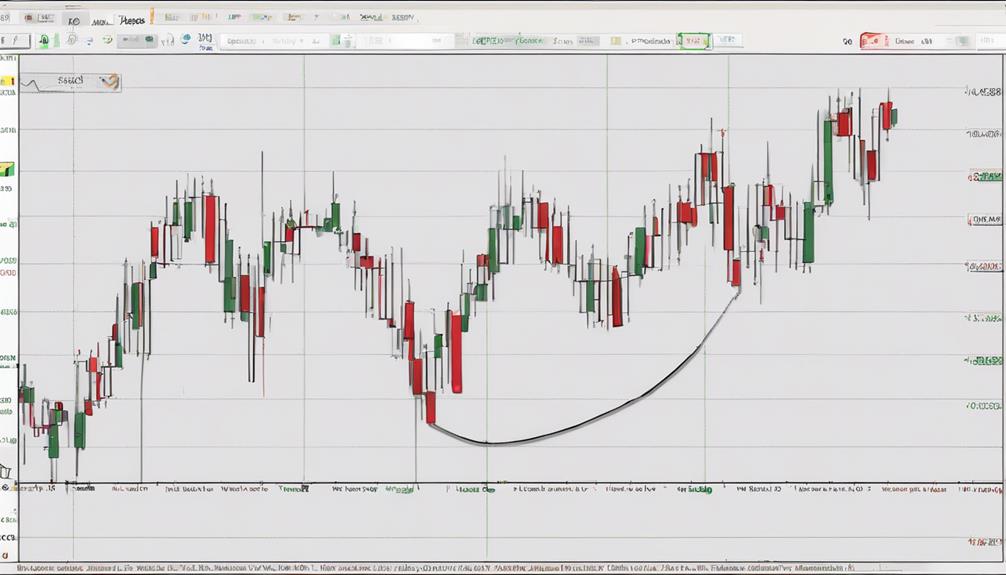
Impulse waves, a fundamental component of Elliott Wave Theory, play a crucial role in understanding market dynamics.
Identifying these waves involves analyzing their distinct characteristics and applying precise wave counting methods.
Wave Characteristics
Analyzing wave characteristics plays a pivotal role in identifying impulse waves within Elliott Wave Theory. Impulse waves, moving in the direction of the main trend, consist of five sub-waves, with the third wave typically being the strongest and extending beyond the previous wave.
These waves exhibit strong momentum, aiding traders in predicting market direction. Successfully trading using Elliott Wave Theory relies on the ability to identify these wave characteristics accurately.
Wave Counting Methods
Identifying impulse waves through wave counting methods is a fundamental aspect of applying Elliott Wave Theory in forex trading analysis. When analyzing wave structures, especially in the context of impulse waves, certain key points need consideration:
- Impulse waves are labeled with numbers in Elliott Wave Theory, specifically waves 1, 3, and 5.
- Wave 3 within an impulsive wave is typically the longest and strongest.
- Impulse waves move in the direction of the main trend and show strong momentum.
- Correctly identifying and counting impulse waves is crucial for successful wave analysis.
- Impulse waves play a key role in determining the overall trend direction in Elliott Wave Theory.
Understanding these aspects aids in accurate wave identification and predicting market trends effectively.
Recognizing Corrective Waves
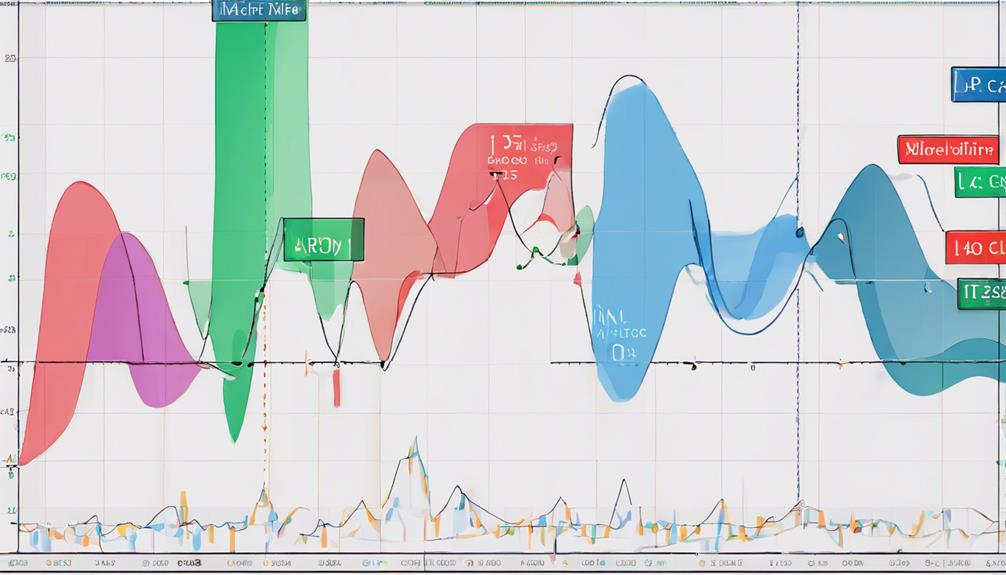
Recognizing Corrective Waves in forex trading is crucial for accurately interpreting market movements and making informed trading decisions. Corrective waves, which move against the trend direction in a 3-wave pattern, are an integral part of the Elliott Wave principle.
These waves come in various forms such as Zigzag, Flat, and Triangle patterns. Their primary purpose is to retrace a portion of the preceding impulse wave, providing traders with opportunities to enter or exit positions strategically.
By understanding corrective waves, traders can enhance their wave counting accuracy and make more sound trading decisions based on the market's current state. Recognizing the specific characteristics of each type of corrective wave enables traders to anticipate potential price movements and adjust their strategies accordingly.
Whether it is identifying a Flat correction or a Triangle pattern, a deep comprehension of corrective waves is essential for successful forex trading.
Utilizing Fibonacci Retracement Levels
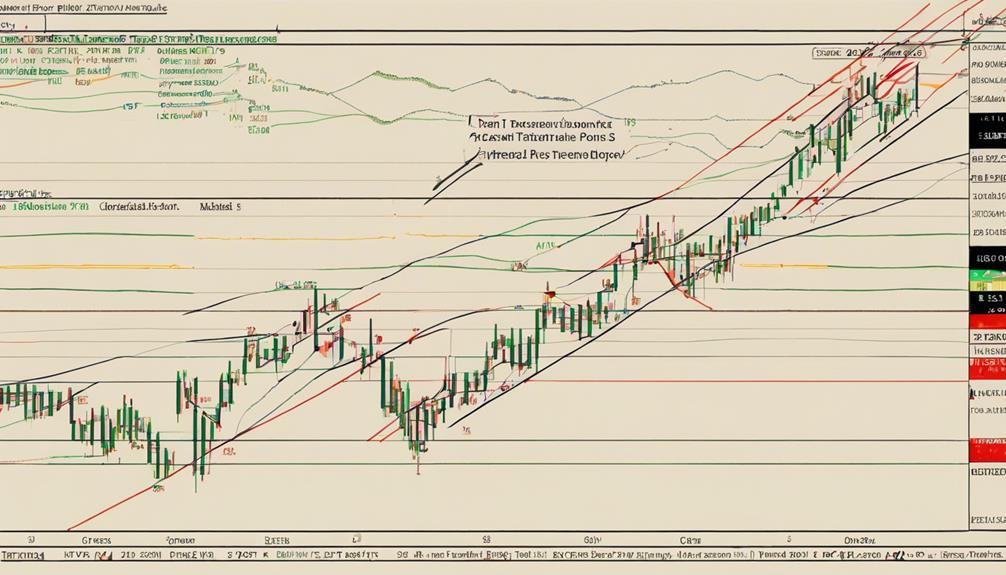
Utilizing Fibonacci retracement levels plays a crucial role in enhancing the precision of Elliott Wave Theory analysis in forex trading. When combined effectively, these tools can significantly improve trading accuracy and decision-making.
Here are key points to consider:
- Identifying Potential Reversal Points: Fibonacci retracement levels help traders pinpoint areas where price corrections may end and new impulse waves could initiate.
- Utilizing Fibonacci Ratios: Traders commonly use ratios like 0.382, 0.500, and 0.618 to plot retracement levels on price charts, aiding in forecasting market movements.
- Dynamic Support and Resistance Zones: These levels act as dynamic support or resistance zones, influencing price action around these key levels.
- Enhancing Elliott Wave Analysis: The integration of Fibonacci retracement levels with Elliott Wave Theory can provide a more comprehensive view of market trends.
- Improving Decision-Making: By incorporating Fibonacci retracement levels into analysis, traders can make more informed decisions regarding entry and exit points, increasing the likelihood of successful trades.
Timing Entry and Exit Points
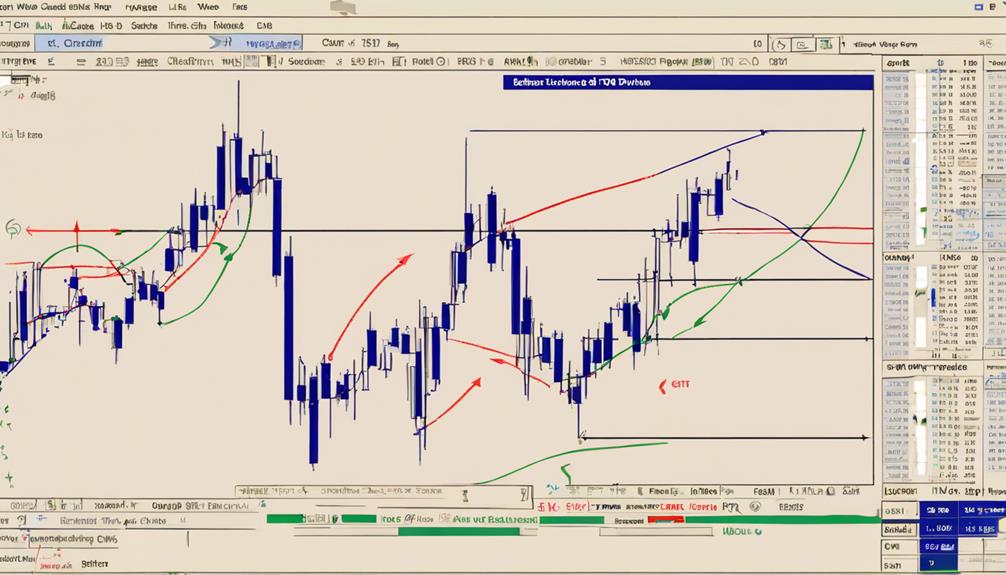
Timing entry and exit points in forex trading is a critical aspect that requires strategic analysis and precise decision-making to capitalize on market opportunities.
Elliott Wave Theory plays a crucial role in helping traders identify wave patterns within market trends, such as impulse waves and corrective waves. By correctly interpreting these waves, traders can enhance the timing of their trades.
Incorporating Fibonacci retracement levels into Elliott Wave analysis further refines the accuracy of entry and exit points. Monitoring wave extensions and retracements enables traders to make strategic decisions regarding when to enter or exit a trade.
Additionally, recognizing signs of trend reversals based on Elliott Wave patterns assists in timing trades effectively, ensuring that traders are well-positioned to take advantage of market movements.
Ultimately, mastering the timing of entry and exit points is essential for successful trading in the forex market, and utilizing Elliott Wave Theory can greatly aid in making informed and strategic trading decisions.
Applying Wave Principle to Risk Management
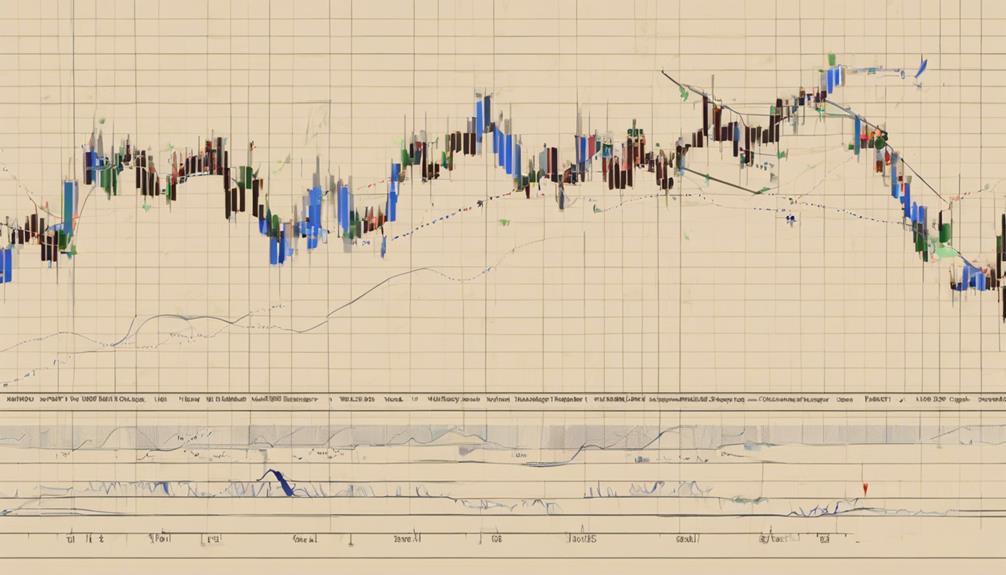
The application of Elliott Wave Principle to risk management in forex trading offers traders a systematic approach to identifying and navigating potential entry and exit points aligned with wave patterns. This integration of wave analysis into risk management strategies can significantly enhance decision-making processes.
- Implementing Stop-Loss Orders: Setting stop-loss orders at key levels determined by wave analysis helps limit potential losses and manage risk exposure effectively.
- Utilizing Position Sizing: Adhering to position sizing rules, such as risking only 2% of capital per trade, is crucial in controlling risk and preserving trading capital.
- Monitoring Technical Indicators: Combining wave impulses with technical indicators enables traders to assess risk factors accurately and make informed trading choices.
- Trade Management Techniques: Employing trade management techniques based on Elliott Wave principles allows for optimizing profit-taking opportunities while simultaneously reducing risk exposure.
- Booking Profits Strategically: Strategically booking profits at predefined levels based on wave patterns can help traders secure gains and mitigate risk in volatile markets.
Integrating Elliott Waves With Technical Analysis
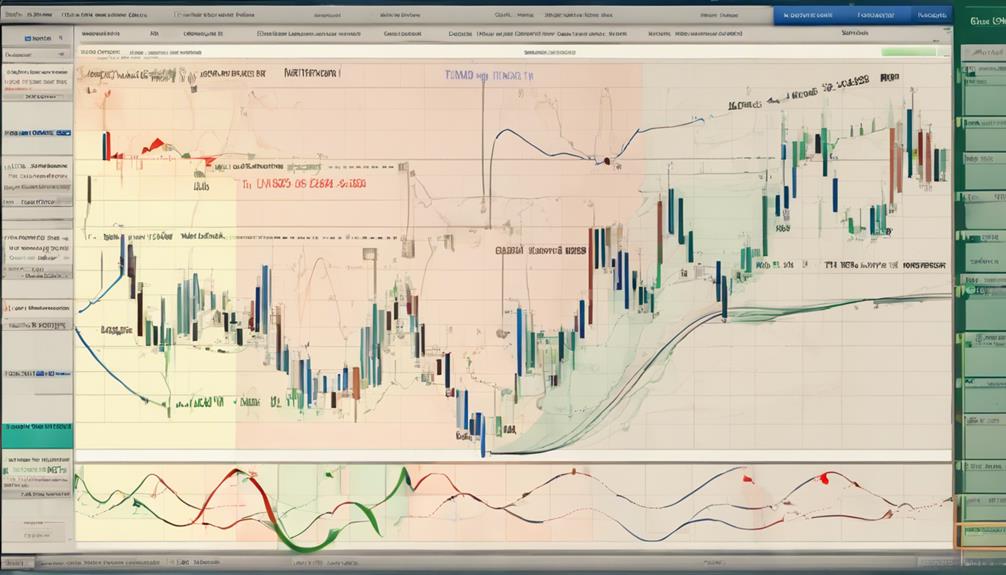
Integrating Elliott Waves with technical analysis enhances the precision and effectiveness of trade setups by providing additional confirmation signals and strengthening the overall analysis process. By incorporating tools like Fibonacci retracement levels, traders can pinpoint potential reversal points or areas of price continuation with greater accuracy.
Combining Elliott Waves with indicators such as moving averages or RSI offers further validation for trade entries, increasing the confidence in decision-making. Chart patterns like head and shoulders or double tops/bottoms, when used in conjunction with Elliott Wave Theory, reinforce the identification of key levels for trade setups.
Monitoring volume trends alongside Elliott Wave patterns aids in confirming the momentum behind price movements, thereby enhancing trading strategies. Additionally, cross-referencing Elliott Wave counts with support and resistance levels identified through technical analysis assists in refining trade management strategies and conducting more thorough risk assessments.
This integration of Elliott Waves with various technical analysis tools provides traders with a comprehensive approach to analyzing the market and executing well-informed trades.
How Can I Combine Elliott Wave Theory and Gann Theory for Forex Trading?
When it comes to maximizing forex profits with Gann Theory, combining it with Elliott Wave Theory can be powerful. Elliott Wave Theory helps analyze market trends, while Gann Theory can provide key support and resistance levels. By using both in conjunction, traders can identify high-probability trade setups for enhanced profitability.
Frequently Asked Questions
Does Elliott Wave Work in Forex?
Yes, Elliott Wave Theory can be effective in Forex trading when used correctly. By analyzing wave patterns, traders can anticipate market movements more accurately, aiding in decision-making. Proper understanding and application can enhance trading strategies significantly.
What Is the Best Indicator to Use With Elliott Wave?
The Fibonacci Retracement tool, a beacon amidst market complexities, serves as the ideal companion to Elliott Wave Theory. By pinpointing potential reversal levels, it sharpens entry and exit strategies, harmonizing with Elliott Wave analysis for strategic precision.
What Is the Success Rate of Elliott Wave Trading?
The success rate of Elliott Wave trading can vary, with factors such as trader skill, experience, market conditions, and adherence to rules influencing outcomes. Successful traders often combine wave analysis with other indicators for validation and confirmation.
What Is the Secret of the Elliott Wave?
The Elliott Wave Theory's secret lies in its ability to decode market sentiment through wave patterns. By understanding investor psychology, traders can anticipate price movements and identify optimal entry/exit points, enhancing their trading strategies.
Conclusion
In conclusion, mastering Elliott Wave theory in forex trading offers a strategic advantage for traders seeking to navigate the complexities of the market.
By understanding wave patterns and incorporating technical analysis tools like Fibonacci retracement, traders can make informed decisions and manage risks effectively.
Implementing these game-changing tips can lead to improved profitability and success in the forex market.
Embracing the power of Elliott Wave theory is the key to unlocking potential opportunities and achieving trading success.
